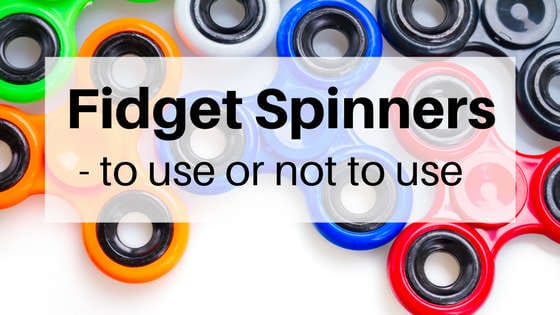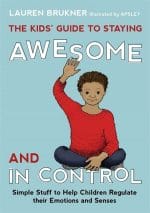
1. What is the Goal of a Fidget Tool
2. How to Select a Fidget tool
Subscribe to our newsletter at the bottom of this page to also read about :
3. Quick Tips for Sensory Tools
4. Top Tips to Introduce in your Classroom
Fidget Spinners – To Use or NOT To Use
There has been a huge amount of debate around the use of fidget spinners. I suspect they are a fad that will pass. The great news is these have raised awareness of some students needing sensory tools to engage, participate in learning, regulate emotions and reduce anxiety. It has also highlighted the need to make careful selection of sensory tools.
Here are my tips for using, introducing and managing sensory tools in your classroom, preschool or home.
Instead of calling the sensory resources ‘fidgets’ or ‘toys’ consider calling them ‘tools’. I often call them a ‘magic wand’ as they can make a huge difference much like glasses are a tool to help me see better, focus, stay on task, be more independent there are different tools different students need to help them too i.e. sensory tools.
Many people ask me is there one fidget tool that is best? The simple answer is ‘no’, because a combination of strategies is required and each child has different sensory needs. Here are some good guidelines to help select and introduce tools in your classroom/home:
What is the Goal of a Fidget Tool?
- Reduce anxiety.
- Increase focus.
- Increase concentration.
- Calmer to start off or engage in activities.
- Less disruptive to peers.
- Wait for longer, sit for longer.
- Keep fingers busy, body active
- Motion can increase productivity.
- Replace current behavior (i.e. chewing).
How to Select a Fidget Tool?
- Small enough to fit in your hand or pocket.
- Doesn’t make noise.
- Not distracting to others (which I suspect is the key issue with fidget spinners as they attract other students).
- Doesn’t bounce.
- Has movement or texture or something that will engage the hand of the individual.
My preference rather than the fidget spinner is the wooden hand massager. It gives the same sensory feedback and fits ALL my selection criteria.
This is MAGIC! It fits in the palm of your hand and the little ball rotates. Solid and beautifully made!
Quick Tips to Using Sensory Tools:
- Use tool as a waiting object (i.e. hold the tool until it is your turn for the game).
- Use sensory tool for emotional regulation.
- Have a box of sensory tools (calming objects) so the children can select the one that they require. (See below.)
- Some sensory tools are used in class, other children need physical activities or movements to help them focus.
- Set rules around their use e.g. return tools to box at end of mat times OR you must request to go outside for BIG movement breaks.
- Use a range of tools as they do wear out and sensory needs can change.
Top Tips to Introduce Sensory Tools in Your Classroom (or Daycare Centre)
The goal is to make the children realise we all have different sensory needs and preferences. These activities help children realise ‘why’ some children need different tools in order to selfregulate, focus, learn and engage.
It is important the activities help children understand that different children need different tools for different reasons, and therefore at different times, places and situations. For example some need at mat time (e.g. sensory mat), some during work tasks (e.g. chew stixx pencil topper), some for relaxation/calming or rest time (e.g. fidget tool), etc.
- Introduce the five senses (touch, taste, smell, sight, sound).
- Introduce movement as part of sensory too. (Yes, it is a sixth sense).
- Make lists of likes and dislikes under all six senses. For movement discuss heights, swinging, jumping, falling, rolling, etc. This is usually fun – comparing likes and dislikes (especially taste).
- As part of the discussion, ask children what sensory experiences might help them stay calm, alert, and attentive in school. (For a great resource see The Kids Guide to Staying Awesome and In Control).
- Once you’ve helped all the children identify their preferences and what works for them, make a list of the items and strategies you’ll include in your classroom ‘Calming Box’ (see picture) or ‘Take a Break Table/Area’. Include items that will address the preferences and needs you’ve identified in the group of children.
- Have each student create a ‘menu’ of sensory tools to use for different purposes. There are some great examples in The Kids Guide to Staying Awesome and In Control.



 For all orders outside Australia please email
For all orders outside Australia please email 